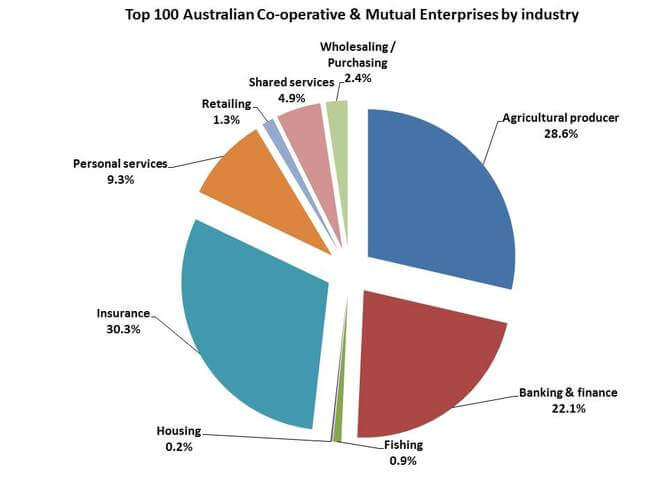17 November 2014
As the 2014 G20 Leaders’ Summit wound up over the weekend the final communique outlined a range of goals. These encompassed enhancing economic growth, reducing unemployment and poverty, boosting trade and investment, and tackling climate change.
Outlined in the communique were calls for the strengthening of global food security and the raising of productivity to expand food supply while increasing farm incomes and employment. An important mechanism that can assist in the achievement of these goals is the co-operative and mutual enterprise (CME).
In the G20 Food Security and Nutrition Framework report there was a specific acknowledgment of the role of agricultural co-operatives and small to medium enterprise (SMEs) in strengthening the global food supply. This was echoed by the Report to the G20 Development Working Group by the Food and Agriculture Organisation (FAO) and the OECD which stated:
“Smallholders can benefit either directly, for example through contract farming, or indirectly as employees in larger enterprises. Helping farmers to organise through farm associations and cooperatives can help them reap economies of scale and bargain more effectively.”
The role of agricultural co-operatives as a mechanism for enhancing the farm sector has also been acknowledged in the recently released Agricultural Competitiveness Green Paper. This initiative from the Australian Government aims to generate a White Paper on how to enhance Australia’s agriculture sector and help sustain rural and regional economies.
In the Green Paper the role of co-operatives in strengthening Australia’s farm businesses was discussed with suggestions for the adoption of the Co-operatives National Law to help foster the creation of such businesses. As stated in the paper:
“Improved coordination between farm businesses through the establishment of cooperatives were identified by some stakeholders as a good way for farm businesses to achieve greater economies of scale and improved profitability without losing individual control of their operations. State and Territory governments, which regulate cooperatives, have agreed to implement the Co-operatives National Law (CNL), which replaces an ageing and fragmented legislative system.”
The BCCM Leaders’ Summit and the Top 100 list of CME
While the G20 Leaders’ Summit wound up in Brisbane, the Business Council of Co-operatives and Mutuals (BCCM) were launching their own Leaders’ Summit in Sydney on 17-18 November. This was specifically timed to follow the G20 summit. A key focus of the BCCM event is the role of CMEs in the broader economy and the challenges confronting such businesses.
One of the events at the BCCM Leaders’ Summit is the launch of the Top 100 largest Australian CME. This was a project that was undertaken by the University of Western Australia’s Co-operative Enterprise Research Unit (CERU). The BCCM Top 100 league table is based on a research paper authored by me and my co-authors Dr Elena Mamouni Limnios, Professor Geoffrey Soutar and Johannes Kresling.
The aim of our research is to develop a better understanding of the size and structure of the Australian CME sector. In 2012 it was estimated that there were around 1,700 such firms operating across the country and within most industry sectors. However, reliable statistics are difficult to access. The study that generated the Top 100 list is part of a broader research project designed to generate an Australian Co-operative and Mutual Index (ACMI) that can provide more reliable data on this important sector.
A snapshot of the findings
Some of the key findings from the study are worth consideration. For example, the combined annual turnover of the Top 100 CME for the period FY2012-2013 was over $25 billion and their combined assets were more than $108 billion. If the Top 10 member-owned Superannuation funds are included in this pool, these figures rise to over $104 billion in annual turnover and $282 billion in assets.
These firms are located across all states and territories although 44% are headquartered in NSW. They are also found in a wide range of industry sectors as shown in the diagram below.

A detailed survey of 36 of these Top 100 CMEs found that all were governed using a “one-member-one-vote” principle that is the foundation of co-operative businesses. The majority (94%) indicated that whatever their industry or incorporation under the Co-operatives or Corporations Acts, their governance was based on “sharing, democracy and delegation for the benefit of their members”.
The majority (61%) distributed financial dividends or distributions to their member shareholders from surplus capital. A high proportion (81%) also allowed non-members to trade with them. However, only one of these businesses permitted non-members to hold share capital.
As many as 39% of these firms operated across state or territory borders and 14% were engaged in exporting. In terms of financial performance the combined annual turnover for these 36 CMEs for the period FY2012-2013 was $6.12 billion with combined assets of $14.5 billion. These firms also had a combined membership of 4.6 million people and a combined employment (full and part-time) of 6,205 employees.
When asked about the impact of market competition over the previous 12 months 64% reported that it had increased significantly. The majority (61%) also expressed negative views over government economic policy as being helpful for their businesses. Furthermore, only 11% of these firms felt government regulation had had a significant, positive impact on them.
An important sector that deserves more recognition
The 2014 World Co-operative Monitor surveyed 1,926 CMEs across 65 countries and a wide range of industry sectors. These firms had a combined annual turnover in 2012 of US $2.6 trillion. Australia’s co-operative and mutual enterprise (CME) sector is small by world standards. Yet it forms part of this global community of similar businesses.
As the results of our survey of just 36 CMEs indicate, these firms impact on the lives of a large number of people and also small business owners and primary producers. They provide such small players a greater level of bargaining power within increasingly competitive markets. Without their presence many farmers, fishermen, builders and small business retailers would be forced into being little more than price takers.
Interestingly Australia’s first co-operative business was founded in Brisbane in 1859 at time before Queensland had become a state. As the world’s leaders gathered in that city to discuss options for economic growth, alleviating poverty and unemployment, the role of the co-operative was once more of relevance.
The co-operative is not the only business model that can provide support to the ‘little guy’ and help to alleviate poverty, unemployment and boost economic growth. However, it has stood the test of time and deserves more recognition as a mechanism for solving market failures and giving greater opportunities for economic and social capital development.
This article was originally published on The Conversation, November 17, and is reposted here under Creative Commons.


